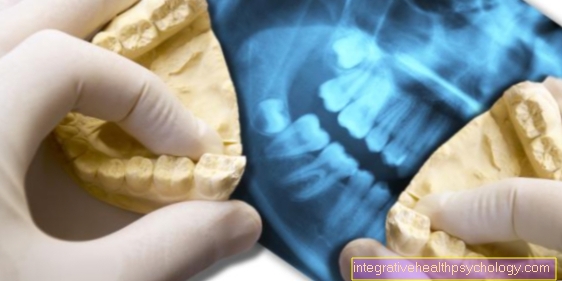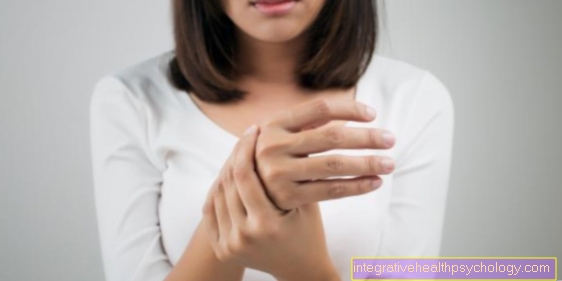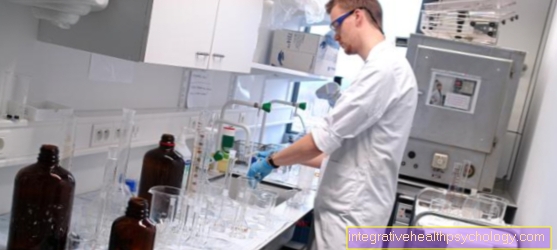Treatment of vaginal thrush
introduction
The vaginal thrush is one of the most common genital infections in women. Vaginal yeast infections are not dangerous, but with typical symptoms such as vaginal itching and discharge, an infection can be very uncomfortable and should be treated quickly. The most common pathogen causing vaginal thrush is Candida albicans, a yeast that affects the mucous membranes in the genital area. Treatment of vaginal thrush should be started as early as possible, otherwise the fungus will spread quickly.
Read more on the topic:
- Vaginal fungus
- Vaginal infection
- Yeast in the vagina

Medication
For self-diagnosis of a vaginal infection, there are a number of self-tests available in every pharmacy that can be used at home. These self-tests can quickly determine whether the symptoms are due to vaginal thrush. There are a number of medications available to combat vaginal thrush and should be started at the first signs of candida infection.
Vaginal yeast medicines contain an antifungal agent, a drug that kills the fungus. These drugs are available in the form of creams or vaginal suppositories, and a combination therapy of both is often offered. Medicines containing the active ingredient clotrimazole effectively eliminate the fungus by inhibiting its growth and killing the fungal cells. When infected with Candida, the natural environment in the vagina is out of balance and the natural protection in the form of lactic acid bacteria is lost. Döderlein vaginal capsules, which contain lactic acid bacteria, can also be used to restore and maintain the natural vaginal flora.
Read more on the topic: What drugs are there for vaginal thrush?
Canesten®
Canesten® is available in any pharmacy without a prescription in the form of creams or vaginal tablets. Canesten® contains the active ingredient clotrimazole, an antifungal agent that works against vaginal thrush by preventing it from spreading and killing fungal cells. Canesten® also contains lactic acid, which helps to strengthen the natural environment of the vagina. The tablets are not taken orally, but inserted as deep as possible into the vagina. The cream is applied several times a day to the affected areas and the outer labia up to the anus.
Read more on the topic: Canesten®
Vagisan®
Vagisan® is a combination product consisting of a vaginal suppository and cream that is used to treat vaginal thrush. The suppository is inserted into the vagina once, where it dissolves and turns into a cream with the vaginal fluid. This fights the fungi and prevents the vaginal fungus from spreading. The vaginal cream is applied to the external genital area and relieves the burning and itching. Vagisan® is available as a one-day therapy, which means one suppository is enough to effectively fight the infection.
Read more on the topic: Vagisan®
Home remedies for vaginal thrush
Many women want a gentle and inexpensive treatment for vaginal thrush and use home remedies that are anti-inflammatory and are supposed to fight the infection in a natural way. The options range from a treatment with yoghurt to hip baths with herbal additives to self-mixed vaginal douches.
Many women swear by yogurt as a treatment for vaginal thrush. For this purpose, a tampon or a cloth is soaked in natural yogurt and this is then inserted into the vagina. Many herbs, such as chamomile, horsetail or tannin, have anti-inflammatory effects, which is why hip baths with herbal additives against vaginal fungus are often recommended. To do this, a brew is brewed from the herbs and added to the bath water. These baths can relieve symptoms in the short term, but they are not effective at fighting vaginal thrush.
Vaginal rinses with vinegar water or diluted tea tree oil have a disinfectant effect and kill germs. In general, vaginal douching is not recommended as it can irritate the vaginal lining, cause allergic reactions and worsen symptoms.
The effectiveness of these home remedies is often not proven, and some remedies can make symptoms worse, so caution should be exercised with these alternative treatment options. It is generally the case that vaginal thrush rarely heals spontaneously. Most fungal infections require medication to relieve symptoms and prevent the fungus from spreading.
Does yogurt help against vaginal thrush?
Yogurt is widely used as an alternative remedy for vaginal thrush. To do this, tampons or tissues are soaked in yogurt and inserted into the vagina. Natural yogurt contains lactic acid bacteria, which are supposed to help restore the natural flora of the vagina and thus fight vaginal yeast infections. However, the bacteria contained in yoghurt are not sufficient to correct the disturbed balance of the vagina and to displace the fungus. Therefore, the vaginal fungus must first be killed by a drug. Only then can the yoghurt help to rebuild and strengthen the natural environment. However, it is important that the yogurt does not contain any sugar or chemical additives, as sugar increases the growth of a yeast fungus. In addition, natural yogurt contains different strains of bacteria than those normally found in the vagina.
Duration of treatment
Most creams that contain the active ingredient clomitrazole should be applied to the affected areas and the external genitals over a treatment period of one to two weeks.
Clomitrazole-containing vaginal tablets are inserted deep into the vagina in the evening for three consecutive days. The treatment with Vagisan® vaginal suppositories, on the other hand, is unique, i.e. only one suppository is sufficient to effectively fight the fungus.
The treatment can also be repeated if necessary. However, if the symptoms still do not improve significantly or even worsen after several days, a doctor must be consulted and the further course of action discussed with him.
What is the treatment during pregnancy?
Many women are affected by vaginal fungus during pregnancy and are more susceptible to it. Due to the hormonal changes during pregnancy, the normally acidic pH value of the vagina rises, which promotes a fungal attack with Candida albicans.
In general, vaginal thrush is not dangerous for the unborn child. However, if the infection remains untreated for a long time, germs can rise to the uterus and cause premature birth. In addition, an untreated vaginal thrush can be transmitted to the child during the birth process and infest the baby's mucous membranes (thrush or candidiasis). Therefore, pregnant women who have noticed symptoms of vaginal thrush should definitely consult a gynecologist and seek treatment. From the 34th week of pregnancy onwards, gynecologists routinely check whether there is an infection with Candida albicans.
The treatment of vaginal thrush during pregnancy is carried out with a drug containing clotrimazole, which is well tolerated and which fights the vaginal thrush quickly. The treatment can be carried out in all three trimesters, but the vaginal tablets should not be inserted with an applicator, but with the fingers.
Further information on this topic can be found at: Vaginal fungus in pregnancy
Treatment during menstruation
Treatment of the fungus with suppositories and vaginal tablets should not be carried out during menstruation. Vaginal thrush during your period is particularly troublesome, but certain precautions can be taken to speed up healing. The following applies to vaginal thrush: the drier the environment, the worse the fungal infection can spread. It is therefore best to use breathable pads and change them regularly. In addition, excessive sweating in the intimate area is to be prevented and therefore no underwear made of synthetic fibers should be used. Excessive hygiene is not necessary during your period, as the outer labia are also colonized by many bacteria that contribute to a healthy vaginal flora.
Treatment of the partner
Fungus is not a sexually transmitted disease, which is why it is very rarely transmitted through sexual intercourse. As long as the partner has no symptoms, treatment is usually not necessary. However, many women feel more comfortable if their partner is also treated for vaginal thrush. Co-treatment with the partner used to be routine, but it has been shown that this does not significantly improve the chances of recovery from a yeast infection.
Also read: Sexually transmitted diseases
Treatment in men
Vaginal yeast infection occurs when the vaginal flora is out of whack. Mushrooms need a humid and warm climate to multiply. The man's limb is rather dry and does not provide a good environment for a fungus, which is why fungal infections in men are rather rare.
Sometimes, however, a fungus settles in the urethra and under the foreskin, especially men with a narrowing of the foreskin can be affected by a fungal infection. An infection usually goes unnoticed, as it does not itch in men and can only be seen as small red pimples. Usually, a fungus on the penis cannot survive long and will go away on its own.
However, if the symptoms worsen and there is also itching and discharge, the fungus must be treated. In principle, the same cream containing clomitrazole can be used to treat a fungal infection in the genital area that women use for vaginal thrush. The fungus spreads mainly in a damp and warm environment, so those affected should keep their penis as dry as possible and reduce sweating in the genital area. In addition, the underwear should be as loose as possible and not be made of synthetic fibers.
Also read our topic: Rash in the genital area
What single treatment is there?
Vagisan® Myko Kombi is a drug for the single treatment of vaginal thrush. This is a vaginal suppository that is inserted into the vagina once. There it melts and combines with the vaginal secretions to form a cream that fights the fungus. It also alleviates the uncomfortable itching and burning sensation of the vaginal skin. Vagisan® contains clotrimazole as an active ingredient. The preparation is available as a combination pack with an ointment, which is also applied to the external genital area for one week.




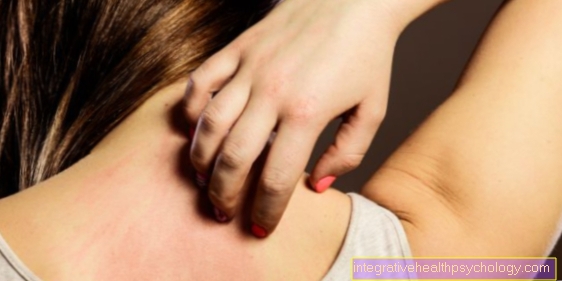
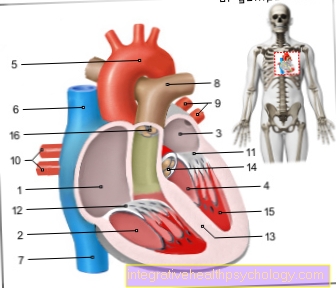
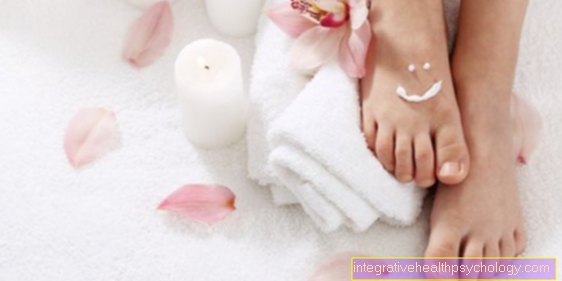
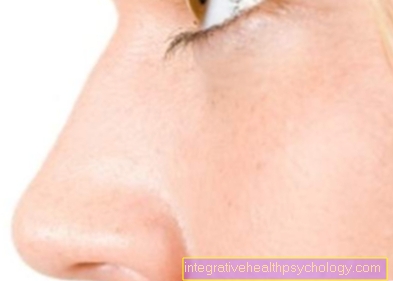
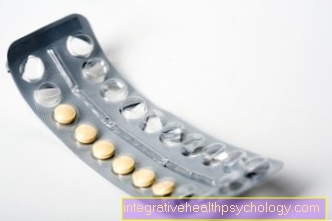
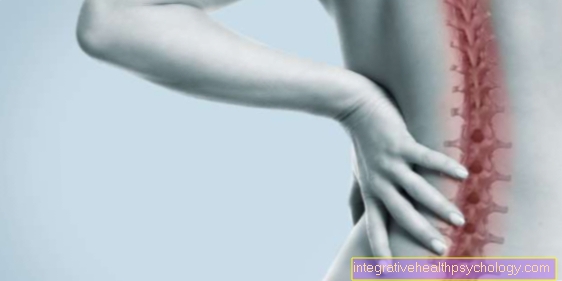

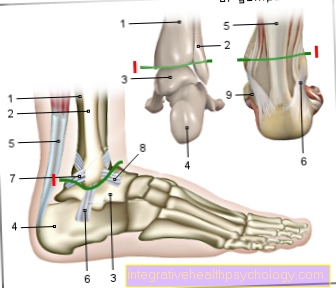

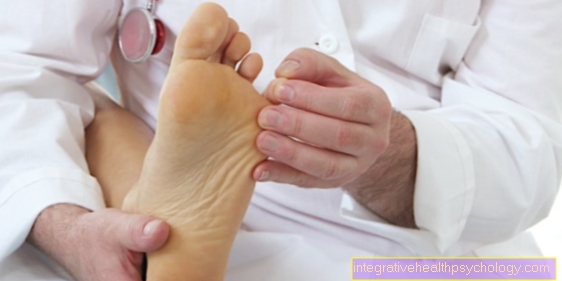


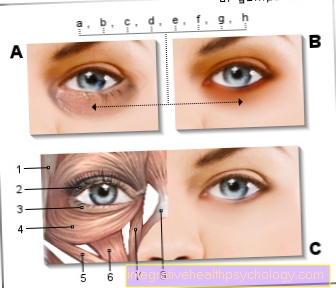

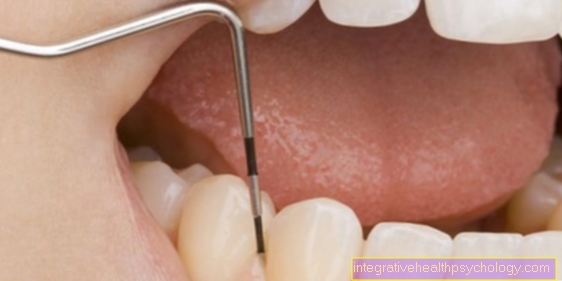

.jpg)
